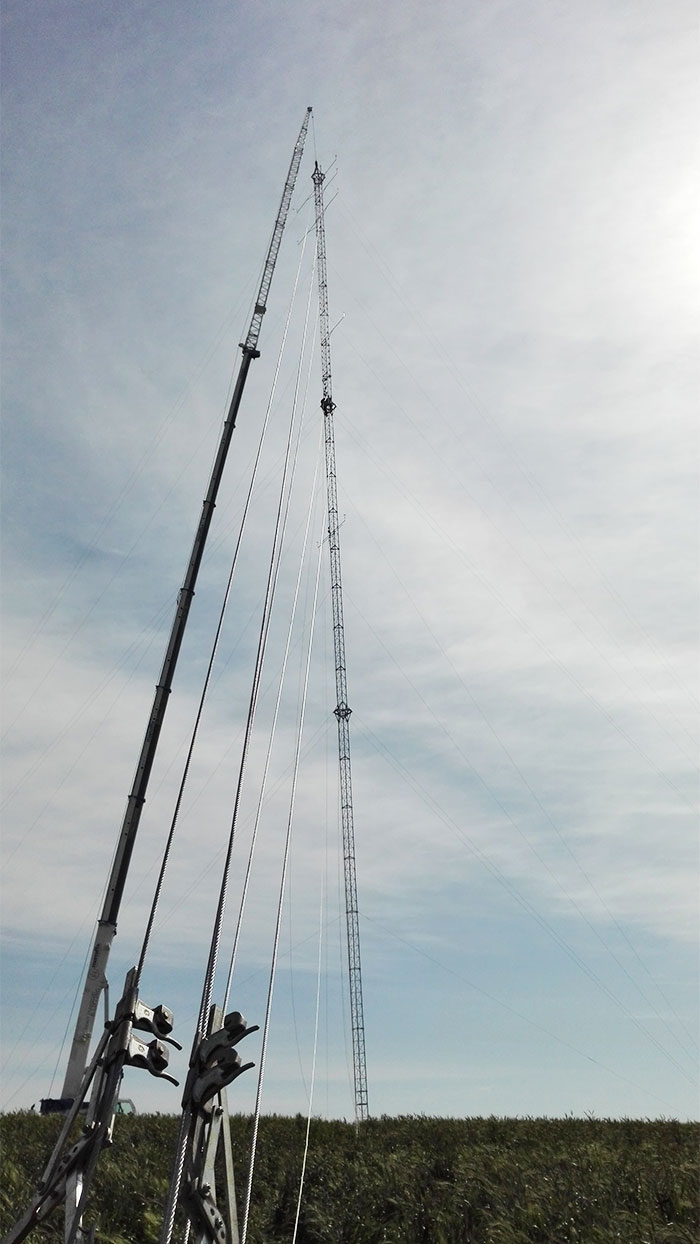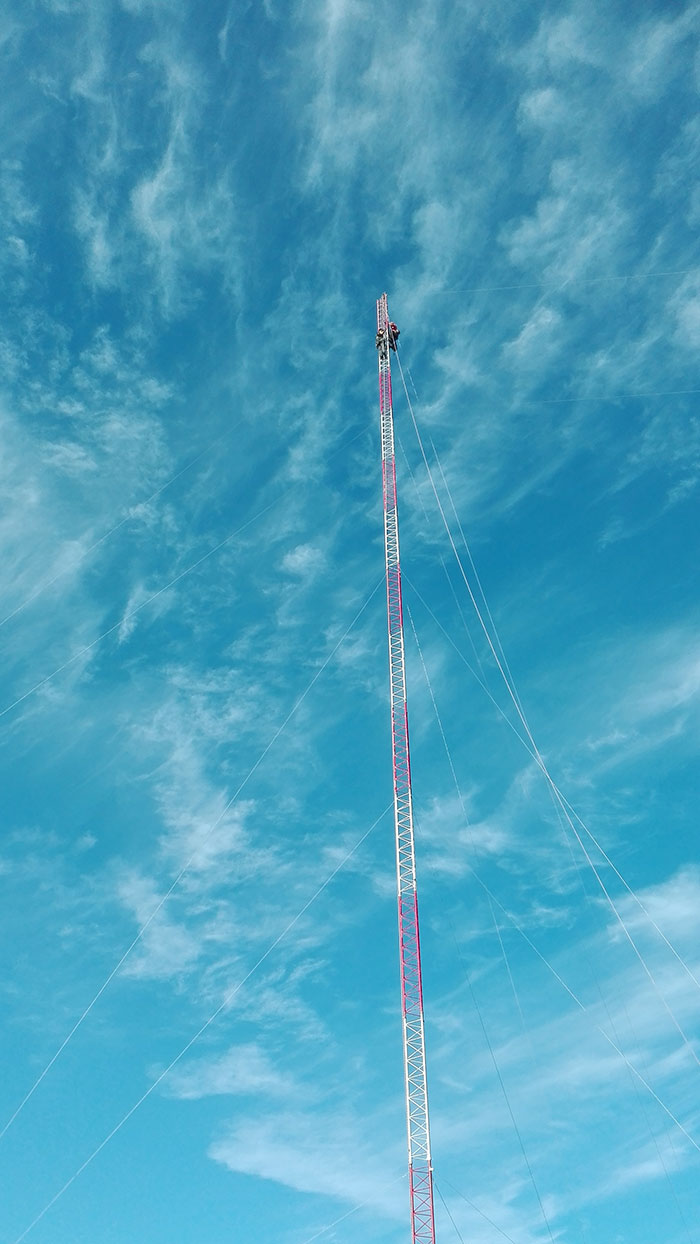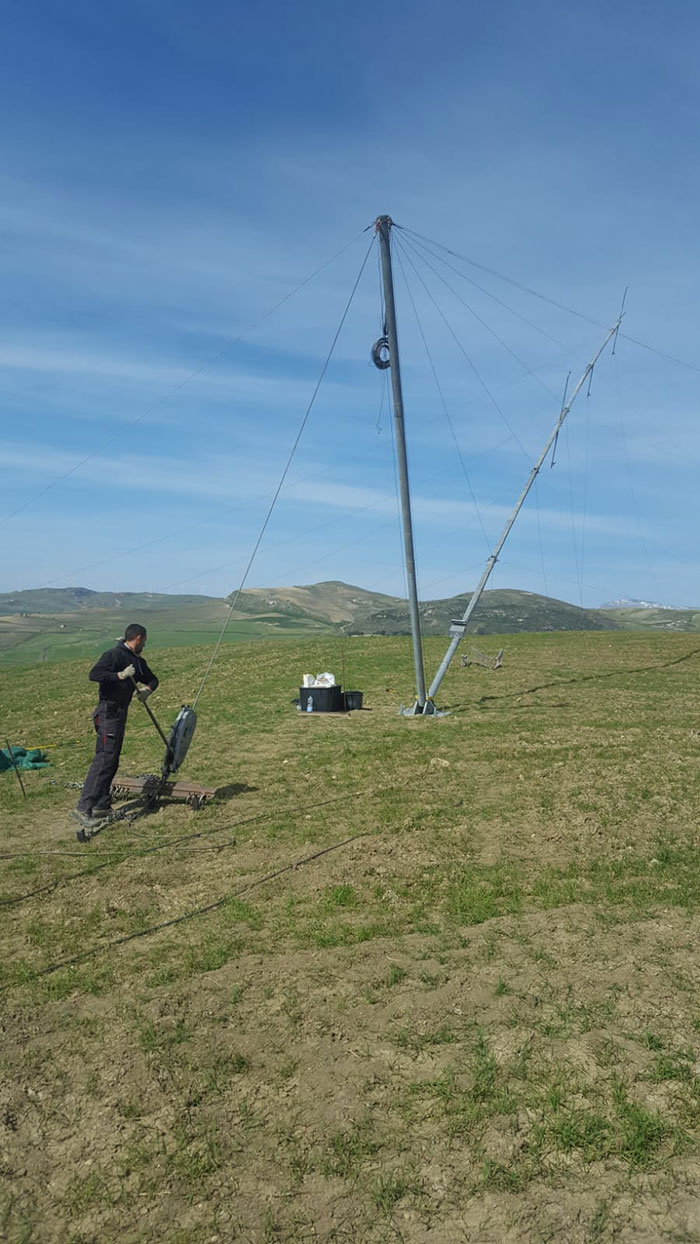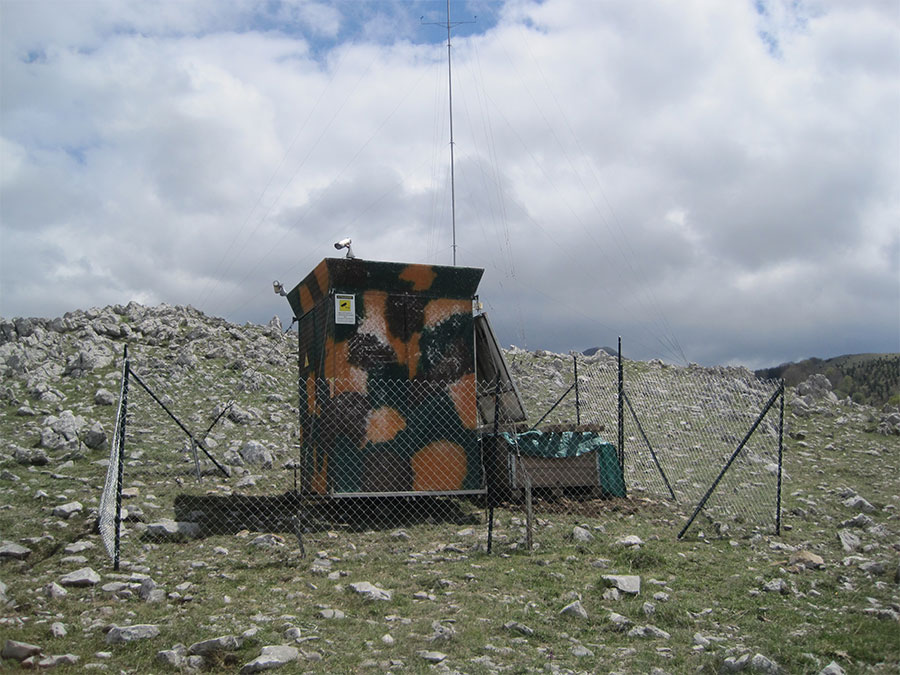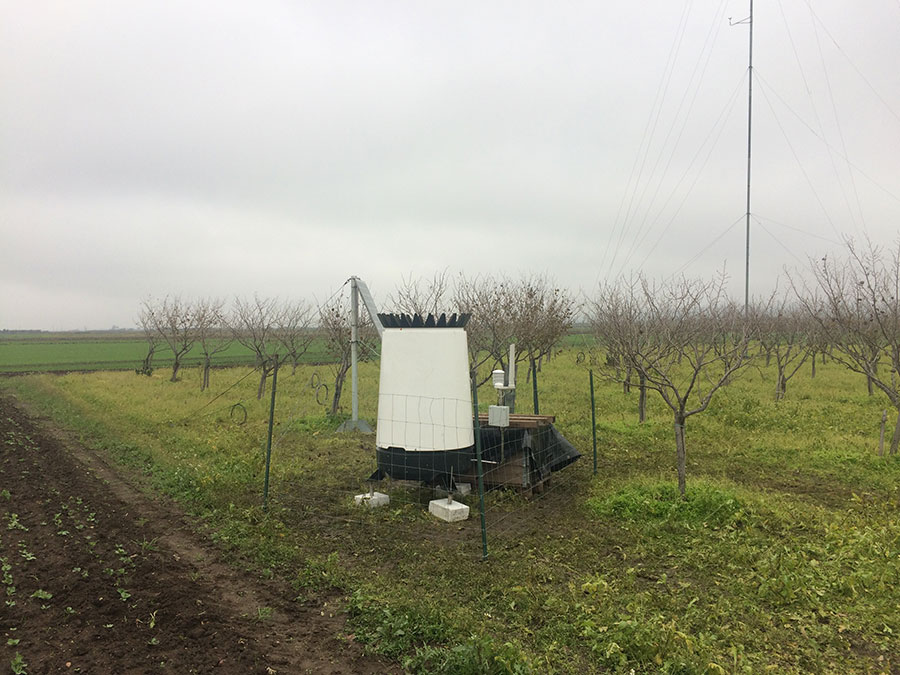Installation/removing of the wind mast
The installation consists of the preparation of the equipment in laboratory (leased or sold by Tecnogaia or supplied by the Customer), in carrying out a series of performance tests in the laboratory and in situ, on-site transportation of all materials (for sites within off-road), the collection of all relevant information that identifies the composition of the mast. Installation is carried out in accordance with the mandatory regulations, as applicable, by qualified personnel. The activities are carried out according the Legislative Decree No 81/08 and for each installation is prepared a suitable plan of security and risk assessment.
The uninstallation consists in performing an operation check of the instrumentation on site and, subsequently, in the laboratory, in documenting the general conditions of the wind mast, verifying any differences with respect to the installation, removal and packaging of the equipment for future checks and re-use, in the disassembly of the structure and transport to the warehouse of all the materials.



